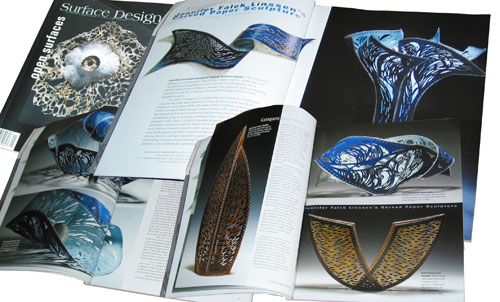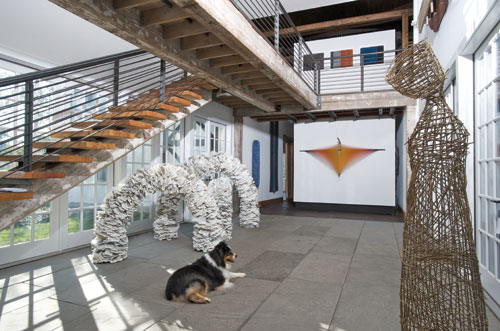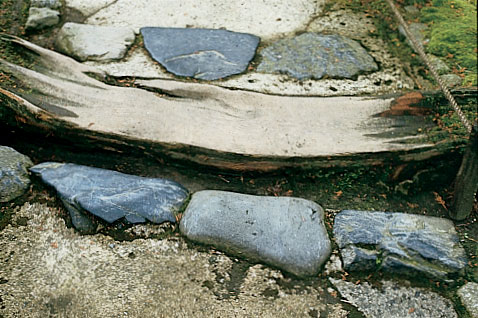
Jennifer Falck Linssen’s work is featured in the Fall 2009 Surface Design Journal in a six-page article, Katagami Inversions: Jennifer Falck Linssen’s Carved Paper Sculptures, by Ginger Knowlton. The article features five dramatic images of hand-carved cotton paper vessels from Linssen’s four-part sculpture series, Wave and Water, Fire and Emotion, Earth, and Wind.
In Knowlton’s view, “[the] process of transference, and of the imagined, is what seems to drive the artist: an exploration between real/physical/tangible and tenuous/ ethereal/potential. On the one level, there is the dynamic between negative and positive space constructed through paper carving, air and light passing through the small pieces of fiber cut away from a larger whole. But there is also the sweep and curve of a vessel filled with…nothing, but in this sense, everything — all of the potential of the absence of the missing elements. This is where Linssen’s sculpture becomes water, or fire, in that essential empty space at once created and surrounded by earth and air elements.“



 Only a few weeks left to left observe the official International Year of Natural Fibres (yes, we’re sticking with the international spelling here). For browngrotta arts and many of the artists we represent, of course, promotion of natural fiber in art and otherwise is a lifelong pursuit. In 2009, however, we had the assistance of the Food and Agriculture Organization of the UN, which declared this year the International Year of Natural Fibres
Only a few weeks left to left observe the official International Year of Natural Fibres (yes, we’re sticking with the international spelling here). For browngrotta arts and many of the artists we represent, of course, promotion of natural fiber in art and otherwise is a lifelong pursuit. In 2009, however, we had the assistance of the Food and Agriculture Organization of the UN, which declared this year the International Year of Natural Fibres







 The opening of the 10th Wave III at Artifact Design Group, 2 Hollyhock Lane, Wilton Connecticut is from 3:30 to 7:30 this Friday the 9th of October. The exhibition features work from more than 40 artists from Europe, Asia, Canada, the US and the UK. Also featured in the exhibition are new furniture designs by Gregory Clark. The show will run through November 28, 2009. Hope you’ll get a chance to stop by!
The opening of the 10th Wave III at Artifact Design Group, 2 Hollyhock Lane, Wilton Connecticut is from 3:30 to 7:30 this Friday the 9th of October. The exhibition features work from more than 40 artists from Europe, Asia, Canada, the US and the UK. Also featured in the exhibition are new furniture designs by Gregory Clark. The show will run through November 28, 2009. Hope you’ll get a chance to stop by!
Sneak Peek 10th Wave III Catalog: Essay by Akiko Busch
Writer Akiko Busch has drafted an essay for the catalog 10th Wave III: Art Textiles and Fiber Sculpture, which is being printed this week. Busch is the author of The Uncommon Life of Common Objects (Metropolis Books), Geography of Home: Writings on Where We Live (Princeton Architectural Press) and, most recently, Nine Ways to Cross a River: Midstream Reflections on Swimming and Getting There from Here (Bloomsbury). A former writer for Metropolis Magazine, Busch writes about culture and design for a variety of publications. She is a regular contributor to the Considerings column in American Craft Magazine. About the work in the 10th Wave III, Busch writes,
The 164-page color catalogs can be ordered from http://www.browngrotta.com/Pages/catalog.34.html beginning October 30, 2009.